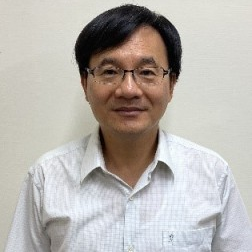Hydrogen Production, Separation and Applications
A special issue of Energies (ISSN 1996-1073).
Deadline for manuscript submissions: closed (15 December 2016) | Viewed by 18821
Special Issue Editor
Interests: bioenergy; hydrogen energy; clean energy; thermoelectric generation; environmental engineering; AI & machine leaning for energy
Special Issues, Collections and Topics in MDPI journals
Special Issue Information
Dear Colleagues,
Hydrogen is a clean fuel for prospective power generation from fuel cells; it can also be employed as a feedstock in some industries to abate greenhouse gas emissions into the atmosphere. Hydrogen production is an essential task to practice hydrogen economy in the future. A variety of routes, including thermochemical, electrochemical, photobiological, and photochemical methods, are being developed to produce hydrogen. In some cases, hydrogen-rich gases rather than pure hydrogen are produced. Therefore, the processes of hydrogen separation and purification, such as membrane separation, pressure swing adsorption and cryogenic distillation, are required. The purified hydrogen can be used in proton exchange membrane fuel cells (PEMFCs), hydrogen internal combustion engines, and chemical and fuel syntheses.
This Special Issue will focus on the state-of-the-art technologies of hydrogen production, separation and applications. Research involving experimental and numerical studies, recent developments, and novel and emerging technologies in this field are highly encouraged.
Dr. Wei-Hsin Chen
Guest Editor
Manuscript Submission Information
Manuscripts should be submitted online at www.mdpi.com by registering and logging in to this website. Once you are registered, click here to go to the submission form. Manuscripts can be submitted until the deadline. All submissions that pass pre-check are peer-reviewed. Accepted papers will be published continuously in the journal (as soon as accepted) and will be listed together on the special issue website. Research articles, review articles as well as short communications are invited. For planned papers, a title and short abstract (about 100 words) can be sent to the Editorial Office for announcement on this website.
Submitted manuscripts should not have been published previously, nor be under consideration for publication elsewhere (except conference proceedings papers). All manuscripts are thoroughly refereed through a single-blind peer-review process. A guide for authors and other relevant information for submission of manuscripts is available on the Instructions for Authors page. Energies is an international peer-reviewed open access semimonthly journal published by MDPI.
Please visit the Instructions for Authors page before submitting a manuscript. The Article Processing Charge (APC) for publication in this open access journal is 2600 CHF (Swiss Francs). Submitted papers should be well formatted and use good English. Authors may use MDPI's English editing service prior to publication or during author revisions.
Keywords
- hydrogen production
- thermochemical conversion
- hydrogen separation
- membrane
- hydrogen applications
- fuel cells
- chemical and fuel syntheses





